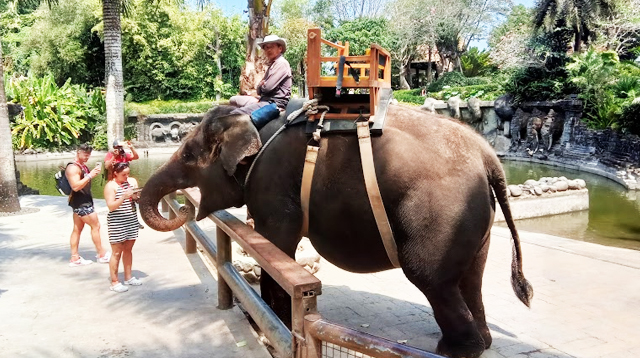ELEPHANT, the largest land mammal, always exudes an aura of majesty and gentleness. At many tourist destinations and wildlife conservation sites, a unique activity now allows us to instantly bond with them: Elephant Feeding, or the act of directly feeding elephants. More than just recreation, this activity offers a combination of interactive experiences, conservation education, and deeply memorable moments.
What is Elephant Feeding?
Simply put, Elephant Feeding is an activity that allows visitors to interact directly with elephants by feeding them prepared food. This activity isn’t just about handing them a basket of bananas or vegetables, but rather a moment where humans and elephants meet, punctuated by the gentle touch of their trunks as they forage for food.
This activity is generally held in conservation areas, zoos, or safari parks that have animal interaction programs. The food provided is always elephant-friendly and preferred food, such as elephant grass, fruits (bananas, papayas, watermelons), or vegetables (corn, sweet potatoes). This activity is always under the strict supervision of a mahout (elephant handler) or professional animal keeper to ensure the safety and comfort of both visitors and the elephants.
How to Do It?
Elephant feeding is very simple, but safety guidelines must always be followed. Here are the general steps:
Purchase Special Feed: Visitors will be asked to purchase a pre-prepared feed package on site. This is important to ensure the elephants only consume food that meets their nutritional and health needs.
Approaching with Assistance: Visitors will be led to the elephant interaction area, usually at a safety fence or platform, always accompanied by a mahout.
Feeding Technique: The mahout will give specific instructions. Generally, you will hold the food (for example, a banana) and wait for the elephant to approach. The elephant will use its clever trunk to take the food from your hand. This is a memorable moment, where visitors can experience the gentleness and intelligence of the elephant’s trunk firsthand.
Enjoy the Moment: During the interaction, maintain composure, avoid sudden movements, and take the opportunity to observe the elephant’s behavior up close.
Deep Educational Benefits
The primary appeal of elephant feeding lies in its high educational value. This hands-on experience is far more effective than simply reading a book or watching a video.
- Learning about Behavior and Anatomy
While feeding, visitors can observe firsthand how elephants use their multifunctional trunks to eat—how they grip, lift, and bring food to their mouths. The mahout will usually explain interesting facts about elephants, such as the amount of food they consume per day, their digestive process, or even their social hierarchy within the herd.
- Fostering Empathy and Responsibility
Positive physical interactions with these large animals foster a strong sense of empathy. Children and adults alike learn that elephants are delicate creatures, in need of care, and face conservation challenges in the wild. This automatically raises awareness of the importance of conserving Sumatran elephants and other endangered species. This experience teaches ethical responsibility in interacting with wildlife.
- Conservation Education
Many places that offer elephant feeding are also conservation centers or breeding centers for rescued elephants. Through these interactions, visitors are encouraged to understand the efforts being made to protect elephants from poaching, conflict with humans, and habitat loss. The money spent on these activities often contributes directly to the costs of care, feeding, and conservation programs.
Alluring Tourist Attraction
For the tourism industry, elephant feeding is a powerful magnet because it offers a highly sought-after interaction-based tourism experience.
- Safe Close-Up Experience
This activity provides a rare opportunity to get as close as possible to an elephant in a controlled and safe environment. The unique sensation of their large, muscular trunks reaching out to your hand to grab food is a thrilling experience and often the highlight of a tourist visit.
- Perfect Photogenic Moments
Elephant feeding, especially when interacting with humans, makes for incredible photos. These moments are perfect for capturing and sharing on social media, serving as natural promotion for the destination and attracting even more visitors.
- Ideal Family Trip
Elephant feeding is an activity that A family-friendly experience. It provides fun and excitement for children, while also providing an effective learning tool for adults. It’s a fun way to spend a holiday while instilling values of environmental and animal love in the younger generation.
Overall, Elephant Feeding is more than just a tourist activity, but rather a bridge connecting people with the beauty, intelligence, and vulnerability of elephants. It’s an invitation to participate in their conservation story while creating precious, sweet memories. (*)










